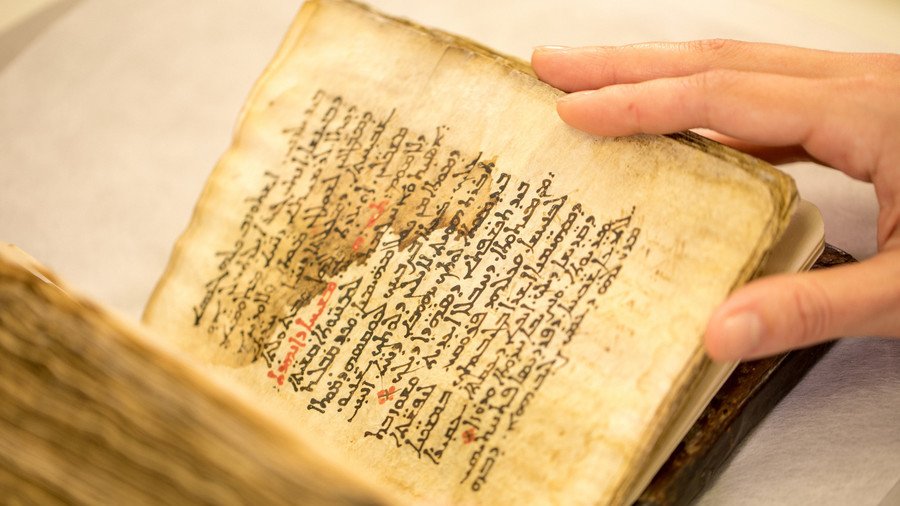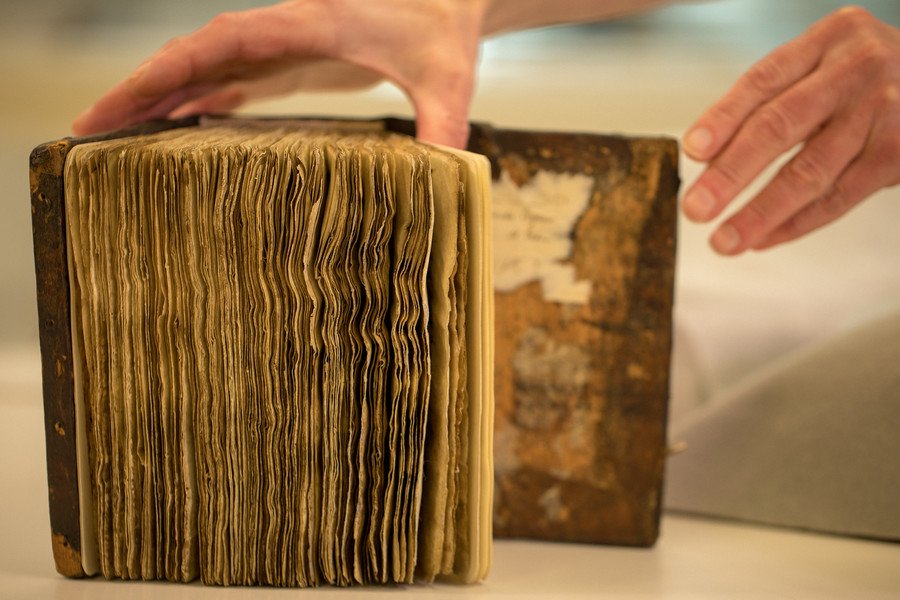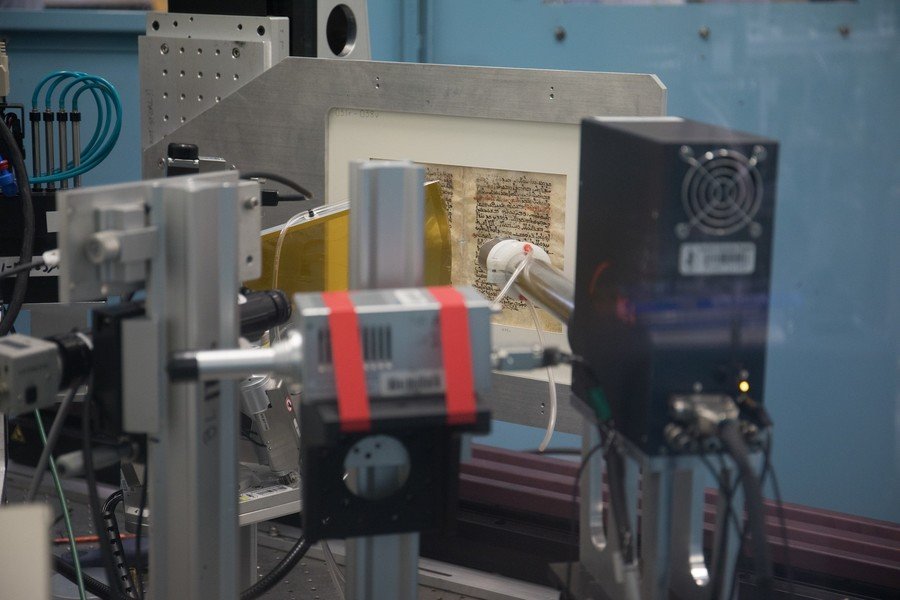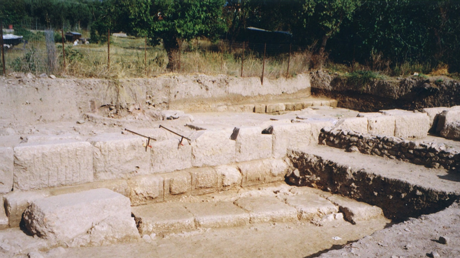1,500yo invisible Greek manuscript recovered by laser (PHOTOS)

A high-powered particle accelerator is being deployed to uncover ancient Greek medical secrets which were scrawled in a book 1,500 years ago. They were later scraped off and replaced by religious scripture.
Greek philosopher Galen of Pergamon, influenced by historical doctor Hippocrates, was a physician to Roman gladiators sometime between 162-217 AD. Syriac translations of his writings are hidden in an ancient manuscript that was found to be reused hundreds of years later by a person transcribing religious text.
READ MORE: Ancient ‘gate to hell’ still emitting poison gas centuries after mysterious deaths
The book, which dates back to the 6th century, is now being fired with lasers by Stanford University scientists at the SLAC National Accelerator Laboratory. It’s hoped that the original transcription of Galen’s medical into Syriac – a type of Aramaic language – can be revived from the faint shadows of scrubbed lettering.
The team at SLAC told a Facebook live audience that the original text had been “horribly scraped off” and overwritten in the 11th century. Due to lack of resources at the time, it’s dbelieved that iron residue may have been used to wash over the original for repurpose.

The new palimpsest reveals Christian psalms, thought to have been written at St Catherine’s Monastery in Sinai, Egypt. Beam line scientist Sam Webb and his team explained how the process allows researchers to get a greater view of elements contained in the manuscript, for example the different layers and types of ink.

“The process we’re using is x-ray fluorescence imaging. We’re going to hit the sample with x-ray energies and it’s going to make the elements that are in the sample fluoresce,” he said.
Data scientist professor William Sellers of the University of Manchester is one of the researchers tasked with then pouring over the improved imagining. “One thing people use this sort of technique for is spotting forgeries because by picking up the elements that make up the ink, which you can do from the spectral lines that you’ve got, you can identify if this is modern or ancient,” he said.
The team at slack will focus on x-raying 26 pages of the 226 manuscript to uncover the original information.
Like this story? Share it with a friend!














